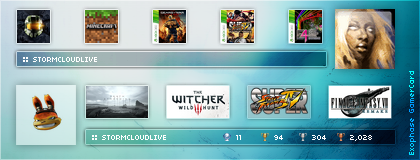Mnementh said:
We actually have no real idea about losses/winnings on console manufacturing. It seems that at one point the production of PS3 was more expensive than it's asking price - but that changed. The 3DS was apparently loss-lead after the price-cut, but Nintendo worked on getting the device back into the profit-zone. Other than that I don't knwo about examples that we actually know if it was profitable. We do have an idea. PS3 costed 800 to make selling for 300 less. On PS4 Sony said they broke even with one game and PS+ sold (so 50 or more loss). Nintendo only time people speculated on they losing money on HW was 3DS. Year or two later Sony was about breaking even on PS4 and then they cut the price (we had CEO saying their strategy with PS4 was to sell as much and fast as possible, so they weren't profiting). X1 is a similar HW, sold less and had the ESRAM so it costed a little more on the HW. The thing that Playstation (and by extension later Xbox) is loss-leading is an actual legend, that was mostly perpetuated by Nintendo fans (PS must dump their prices to sell consoles while Nintendo can ask for quality prices because their console have actual value). You may say it is a legend, but we have hard evidence as well on PS2 selling for less than DVD players at launch, besides PS3 and PS4 already mentioned. And that have nothing to do with needing to dump prices, it have to accelerating sales of HW to make profit on the SW. It's a business model. I know people tend to make completely speculative calculations, which list the components, add their price and assume this is the cost. These calculations are flawed to the core. Let me explain: 1. First of all, the most expensive components in these calculations - CPUs and GPUs - have prices which are itself a complete fiction. The actual cost for producing a CPU or GPU are made up by the following: R&D (that is pretty high for modern stuff), die size, yield, semiconductor manufacturing process size and as usual packaging and distribution. R&D is a high one-time cost. If you sell more units with the same R&D, the R&D cost is split over more units and so the cost is lower per unit. For the other three let me explain a bit. R&D costs are calculated and paid before the release and become loses on the end tail of a gen (you can usually even spot them on their demonstrative. You have sometimes more revenue, but less profit (or more cost) in the same period, as evidence of R&D happening. Even thought that can count as cost, it isn't included on the calculation of the loss per HW sold. You simply don't calculate a one time cost that way in the price of the product (or profit of current ones). Semiconductors are produced these days, by imprints faults on a big silicium wafer. The wafers have standardized sizes, they are cut up into the actual chips afterwards. So, if you CPU or GPU has a smaller die, one wafer produces more chips. As imprinting one wafer cost the same regardless in how many units you cut it up, smaller chips are cheaper to produce. The yield is the rate of defective units. The silicium wafer is very pure, but it can have faults before imprinting. These lead to defective chips. They are sorted out in testing. The less you have to sort out, the lower the cost. The manufacturing process size is more complicated. Obviously with 7nm you get more chips from a wafer as with 15nm, as the die is smaller. But a 7nm manufacturing is more complicated and is more suspectible to defective units. As knowledge with a process progressive, these downsides are reduced though. I do know about these and also about you downclocking or disabling modules to increase yield. Not really part of discussion, but good to people that doesn't know about it. What does it mean in conclusion? Well, if a two chips from the same series use the same manufacturing process and the same die size, they cost exactly the same to produce. But in reality they are clocked differently or different features are enabled or disabled, to sell them at greatly differing prices. This is a marketing tool, to reach different groups of consumers. But if the prices are basically made up, what does it mean if Sony, MS and Nintendo ask? That they can get completely different prices depending on the deals they strike. This can involve more than just simply money for chip, for instance was Sony pretty involved in the design and production of the Cell processor, so they probably had a different deal. One of the biggest diff for price in this is the quantity produced, as not only gain of scale is applied but also leverage. 2. If you produce a console, you need millions of parts - that are exactly the same. These days usually people have different needs and so each one purchases a different CPU for example. But if you get the same PS4 model, you have exactly the same CPU. Remember I said that R&D makes a lot of the actual cost of CPUs and GPUs. If a manufacturer strikes a deal for a console, he can split the R&D cost between a lot of actually produced units. I can easily see that Sony, MS and Nintendo pay less than half for CPU and GPU, than we would do for something similar. For other parts the reduction may not as big, as they don't have as much R&D cost, but the mass production drops the prices for these parts too. Yes sure, but when people do the BOM they don't go MSRP of the components. 3. These calculations usually ignore the manufacturing of the console. All the parts don't assemble themself. The manufacturing is a lot more difficult, if the parts are more integrated. Meaning that the Switch very likely leads to much higher manufacturing costs than the PS4. You may think they ignore, but why would Switch cost more to assembly than PS4 and X1? Phones and Tablets are just as small and portable and you'll still find very low priced ones. 4. R&D is very difficult in this regard. R&D was paid, before the first console ships. As R&D cost is paid beforehand, the number of units sold influencing strongly how much R&D cost is reflected in the cost of each console unit. But we can see the following: PS4 and Xbox One have pretty standard PC architecture. They don't do very extraordinary things that need much R&D, except maybe the Kinect in the Xbox One. PS3 had immense R&D cost. Developing the Cell processor and programming tools for it was complicated. Nintendo used with Gamecube, Wii and WiiU a PowerPC-processor, but always added own instruction sets. So their CPUs were not as expensive as the Cell in the PS3 but probably had more R&D cost than the CPUs in PS4, Xbox One and X360. Wii and WiiU had added R&D costs for their inputs and ways to integrate them into controllers and use them for gaming. As they utilized non-standard ways for gaming, there were lots of trials involved, not needed for more traditional gaming. Now Switch integrates a lot of different input-schemes and ways to play. These include standard ways, which probably were not as intensive in R&D, but also innovative ways to play, which probably involved a lot of headaches. This all probably adds up to immense R&D costs. Including R&D WiiU and Vita probably were easily the most expensive console of younger time. Both were not as easy and standard as the PS4 is for example, but both also sold pretty bad and therefore R&D cost for each unit is quite high. If talking the R&D for Switch would probably be just as standard as PS4 and Xbox sorry, it was an evolution of the Shield, and uses as of-the-shelf concept as the other 2. Overall you see, these calculations of summing up parts is saying exactly nothing about the actual costs of consoles.
Now for games. I wasn't misleading at all. I pretty much said, the costs depend on the game in question, not on the platform. So RDR2 probably had very high budget. It was developed for a long time and had a lot of manpower. Giving a ballpark estimate on costs for developing a game is actually a lot easier than it is for consoles. Because cost for software is basically: how many people developed on the game for how long. So I actually think Zelda:BOTW was pretty expensive, seeing how long it's development took. If you don't assume only a small team worked on it for most of the time (which would mean Nintendo actually planned the delays), this means it built up quite a lot of cost. In contrast, God of War took four years to develop, Santa Monica Studios have around 200 people, so these at most were working on the title. I heard similar team size for Zelda, but as I said a much, much longer development time. Super Mario Odyssey on the other hand probably was a lot cheaper, it took much less time to develop and had probably also a smaller team size. So as I said (non-misleading at all): It depends on the game in question, not on the platform. From what I remember calculating in another thread, Zelda was on the 20M budget and GoW 50M. And certainly they are on very comparable tiers of budget. Mo-cap, voice acting and some other aspects outside of the gaming studio adds to the cost. But that is where Nintendo usually makes games much cheaper than their rivals, that isn't a bad thing as they met their customer demands. |

duduspace11 "Well, since we are estimating costs, Pokemon Red/Blue did cost Nintendo about $50m to make back in 1996"
http://gamrconnect.vgchartz.com/post.php?id=8808363
Mr Puggsly: "Hehe, I said good profit. You said big profit. Frankly, not losing money is what I meant by good. Don't get hung up on semantics"
http://gamrconnect.vgchartz.com/post.php?id=9008994
Azzanation: "PS5 wouldn't sold out at launch without scalpers."
























































